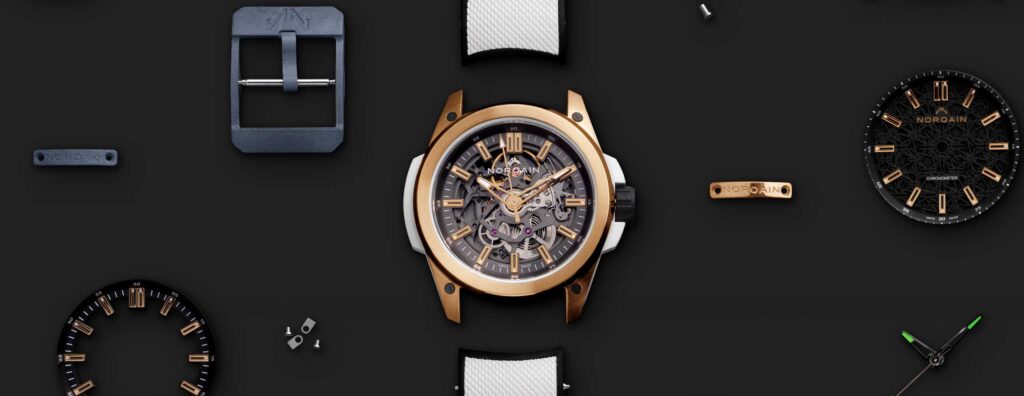A world first and then some
Originally designed by Henri D’Origny in 1978, the Arceau served as a canvas for Hermès where traditional complications undergo a poetic reimagining. Watches such as the Arceau L’Heure De La Lune in 2019 and the Arceau Le Temps Voyageur Dual Time Zone in 2022 were original and stimulating interpretations of the moon phase and dual time zone complications respectively. They were not only remarkable examples of watchmaking but also vehicles for injecting fresh meaning into these complications.
At this year’s Watches & Wonders, Hermès unveils the Arceau Duc Attelé, its most complicated watch yet. It combines two time-honoured complications – a tourbillon and a minute repeater. While this set of complications first made its debut in the Arceau Lift Tourbillon Répétition Minutes in 2020, it’s the quality in the execution of these complications that sets the Duc Attelé apart. The tourbillon is a central triple-axis tourbillon which houses a 5Hz balance wheel and the minute repeater has an innovative gong construction, which according to the brand, produces tones reminiscent of cathedral chimes. This marks the first time that the two complications are combined with a high frequency movement. In fact, it appears to be the first multi-axis tourbillon with a high frequency balance.
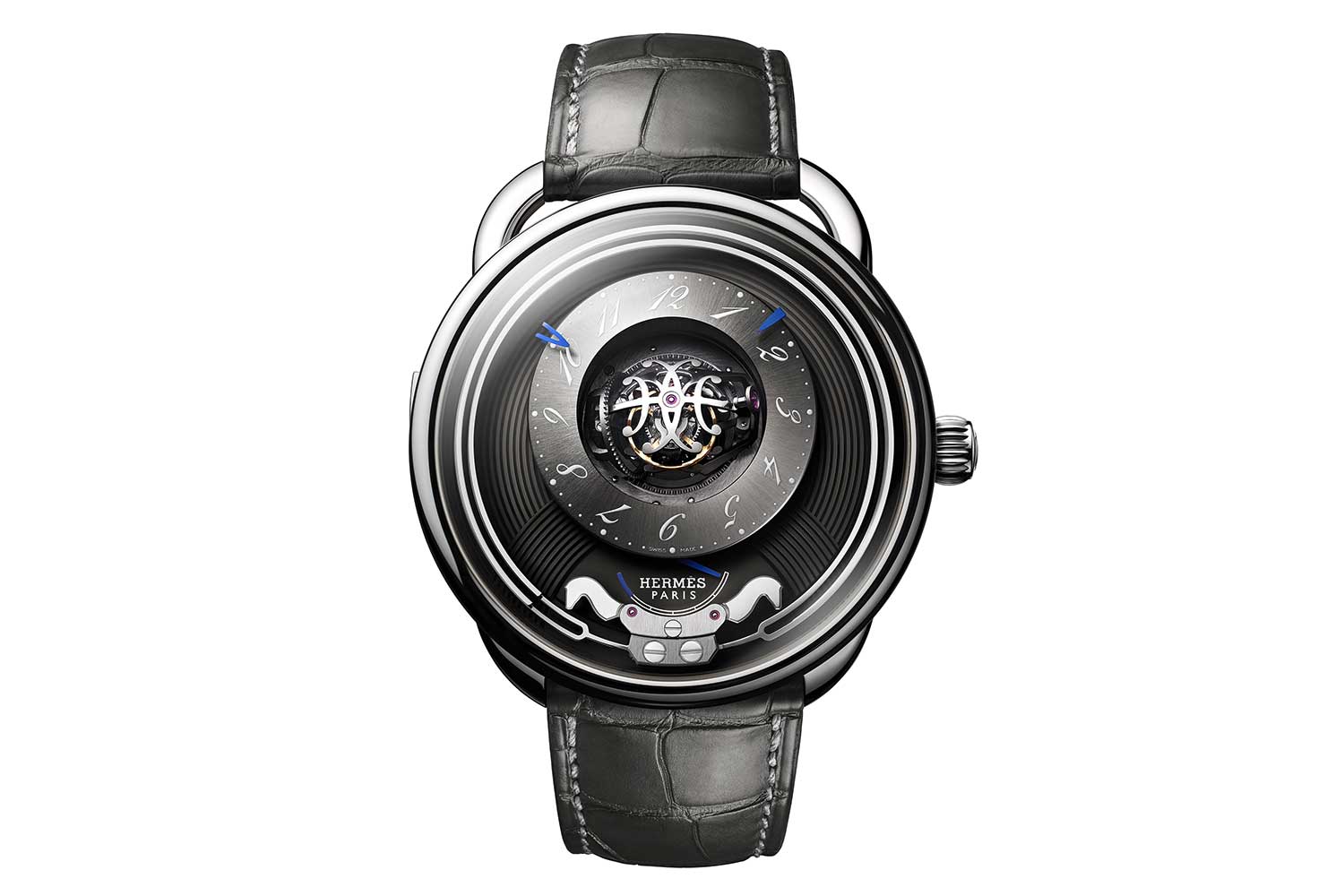
Hermès Arceau Duc Attelé
Central Triple Axis Tourbillon
While the movements for the Arceau L’Heure De La Lune and Le Temps Voyageur Dual Time Zone were developed by Chronode, the calibre in the Arceau Duc Attelé was created by Le Cercle des Horlogers, the complication specialist responsible for some of the most exhilarating, high-concept watches in recent years.
The dial is dominated by a triple axis tourbillon with a titanium carriage shaped with Hermès’ interlacing double H logo. This motif originated from ironwork adorning the lift in the original Parisian boutique at 24 Rue du Faubourg-Saint- Honoré, which symbolised the union of Émile Hermès and Julie Hollande in 1990. Visually striking, the cage is mirror-polished and makes a full rotation in 25 seconds. It is housed in a second cage that completes a rotation in 60 seconds and pivots at a 90° angle relative to the first cage. Both are then housed in a third cage that makes a full revolution in 100 seconds on the vertical plane.
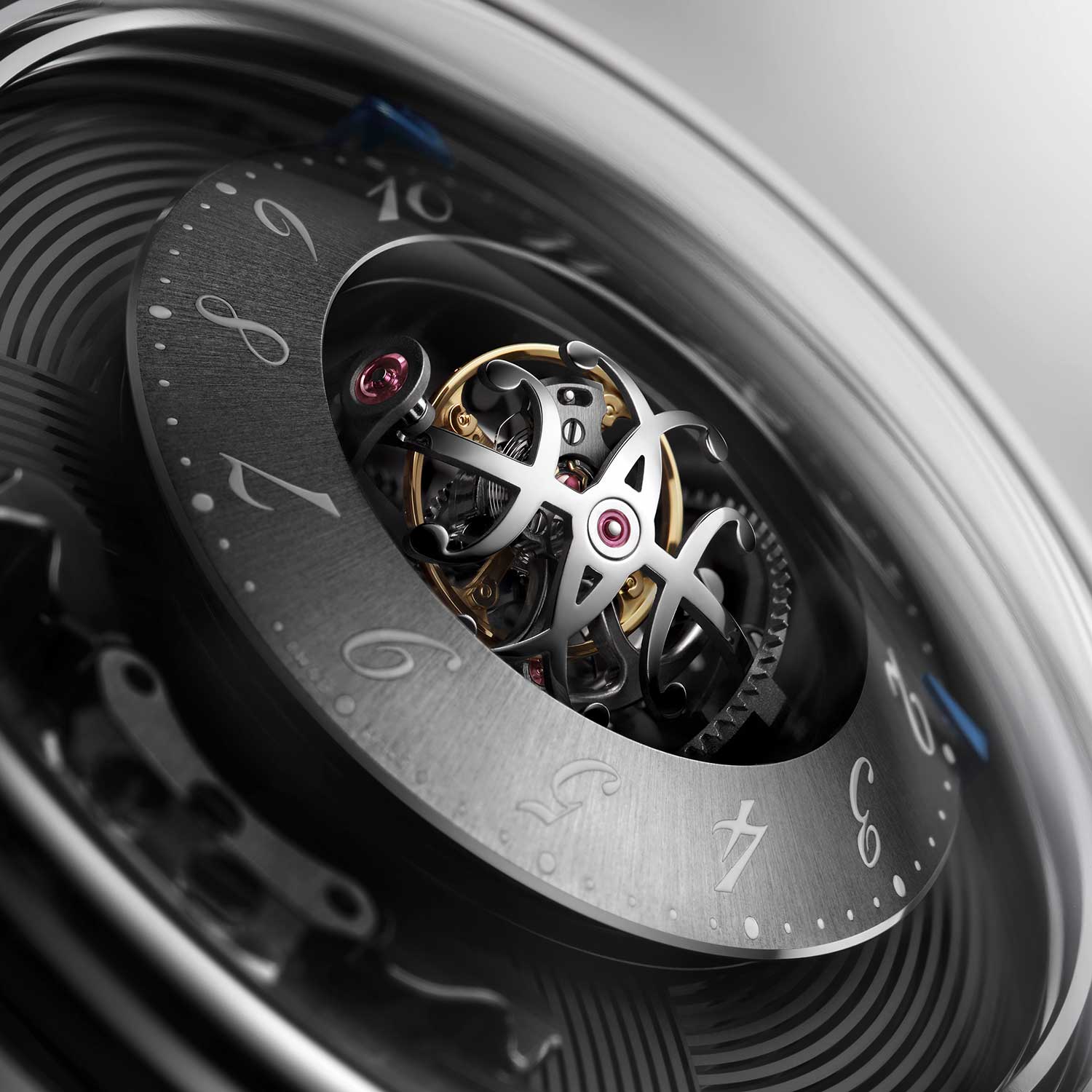
Hermès Arceau Duc Attelé
Multi-axis tourbillons are inarguably hard to manage in terms of dimensions, inertia and energy, giving rise to an inherent element of showbiz when accomplished, but their existence is fundamentally rooted in very practical purposes – to compensate for the effects of gravity in the various positions that a wristwatch may find itself in. A faster rotating tourbillon also serves a practical purpose, which is that it minimizes the time the oscillator spends in any given position. By swiftly manoeuvring through different positions, it effectively reduces errors caused by prolonged exposure to gravitational pull, ultimately enhancing the overall performance of the watch.
On top of that, it houses a 5Hz balance wheel. While a triple-axis tourbillon helps to improve timekeeping accuracy by averaging out positional errors in virtually all directions, the frequency of the balance wheel remains relevant for its resilience to external disturbances; a higher frequency improves the stability of the balance motion in the face of shocks. This in turn also means that additional power must be expended on it in addition to operating a triple-axis tourbillon.
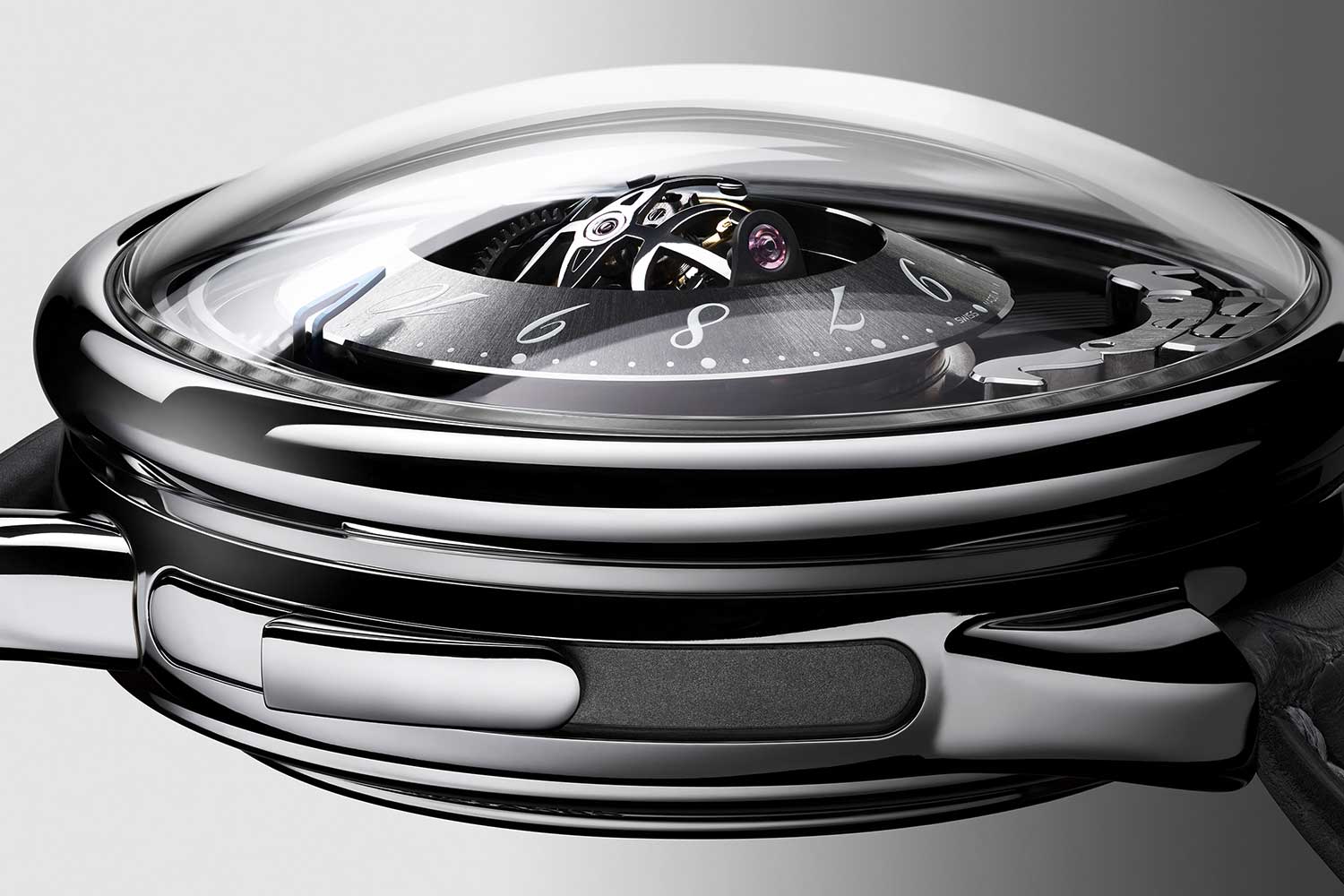
Hermès Arceau Duc Attelé
Adding to its complexity, it is a central tourbillon. Central tourbillons are historically a rather rare genre since Omega patented the first in 1995, and multi-axis central tourbillons are even rarer. The central positioning of the tourbillon within the movement requires an almost wholesale reconfiguration of all the other components, most obviously the gear train, but potentially harder to go about are the keyless works for winding and setting as well as the motion works as there are no traditional hands.
The movement is equipped with two parallel barrels that offer a power reserve of 48 hours, which can be tracked on the power reserve display at six o’clock on the dial, just above the metal foot of the gongs. Surrounding the tourbillon is the time display with blued hour and minutes indicators on its periphery. The rest of the dial is decorated with striped guilloché pattern meant to evoke the propagation of sound waves.
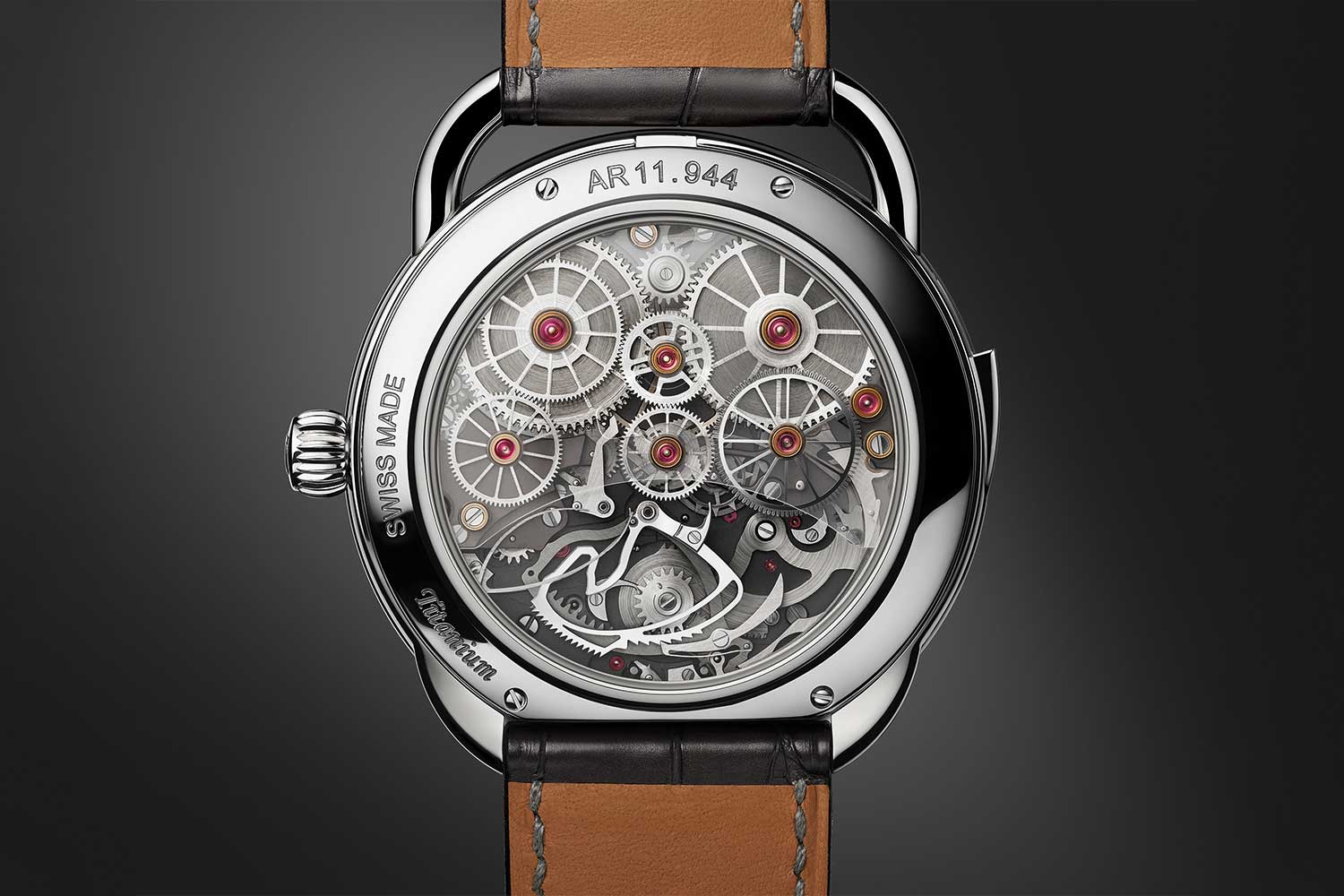
Hermès Arceau Duc Attelé
Minute Repeater with Novel Gong Construction
Typically, the strike works comprising of snails, racks and levers in a minute repeater are built on the dial side of the movement, so that the quarter snail and minute snail can be attached to the cannon pinion and the hour star wheel can be driven directly by the cannon pinion. As such, they’re usually hidden by the dial, and the only observable activity is of the hammers striking the gongs on the movement’s bridge side. However, in this case the hammers and gongs are located on the front while strike train is built on the bridge side of the movement and is completely exposed.
Right at the centre of the movement is the minute snail and visible next to it is the 12-toothed star wheel mounted on the hour snail. The repeater barrel is located at six o’clock with the hour rack and rack pinion on its arbour. But look closer and you’ll see that the quarter rack surrounding them forms the silhouette of a horse’s head while the gears of the movement have unusually narrow spokes. It was inspired by the wheels of the Duc attelé a canopy-top four-wheeled carriage drawn by two horses, depicted in a painting by 19th century French animal painter and master of equestrian art Alfred Dreux, which Émile Hermès acquired in 1920.
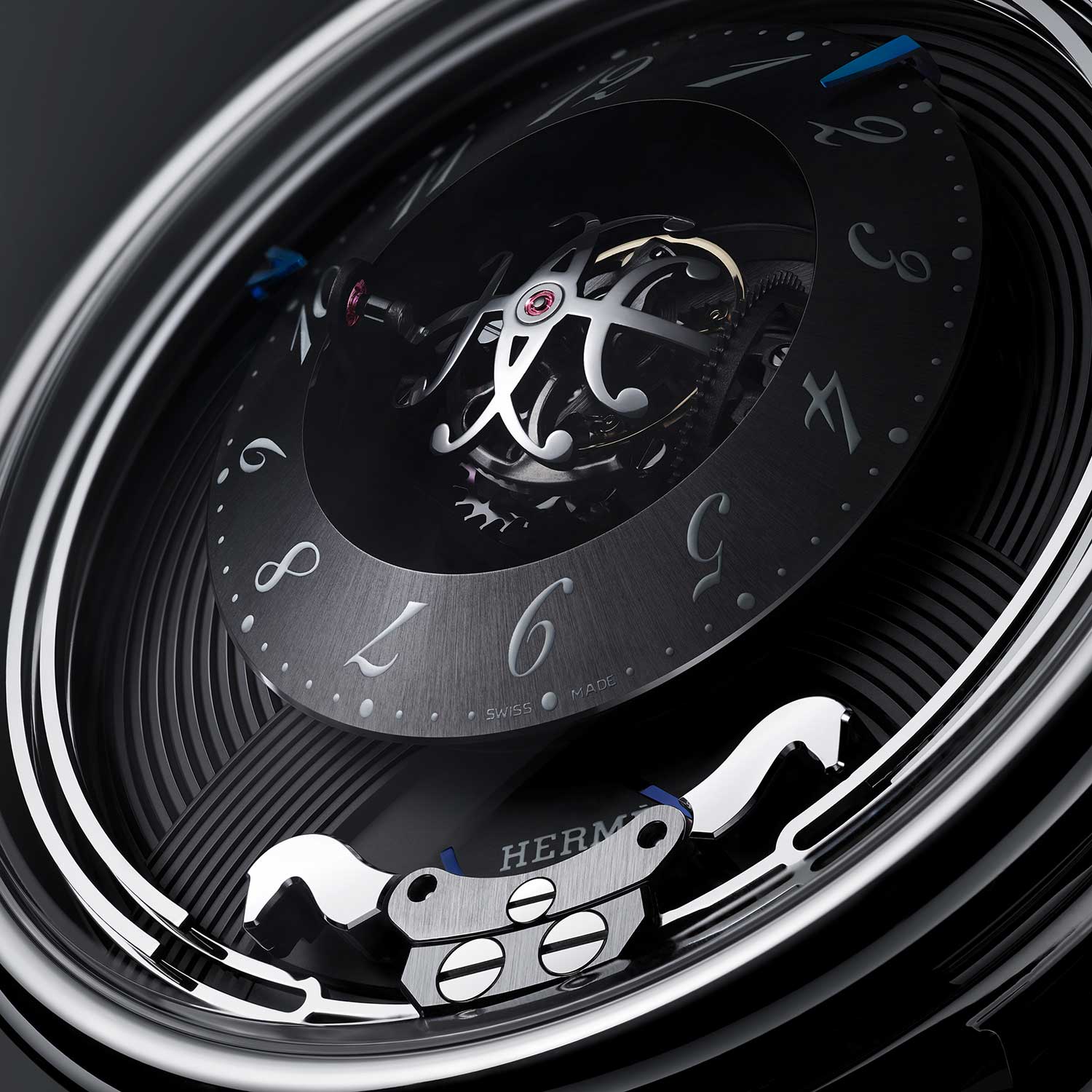
Hermès Arceau Duc Attelé
The watch is available in either titanium or rose gold. Titanium in particular is an ideal material for repeaters. Its combination of low density, high stiffness, good damping properties, and uniform molecular structure enhance the acoustic performance of a minute repeater. Additionally, the lightweight material makes up for its relatively large dimensions; it measures 43 mm wide.
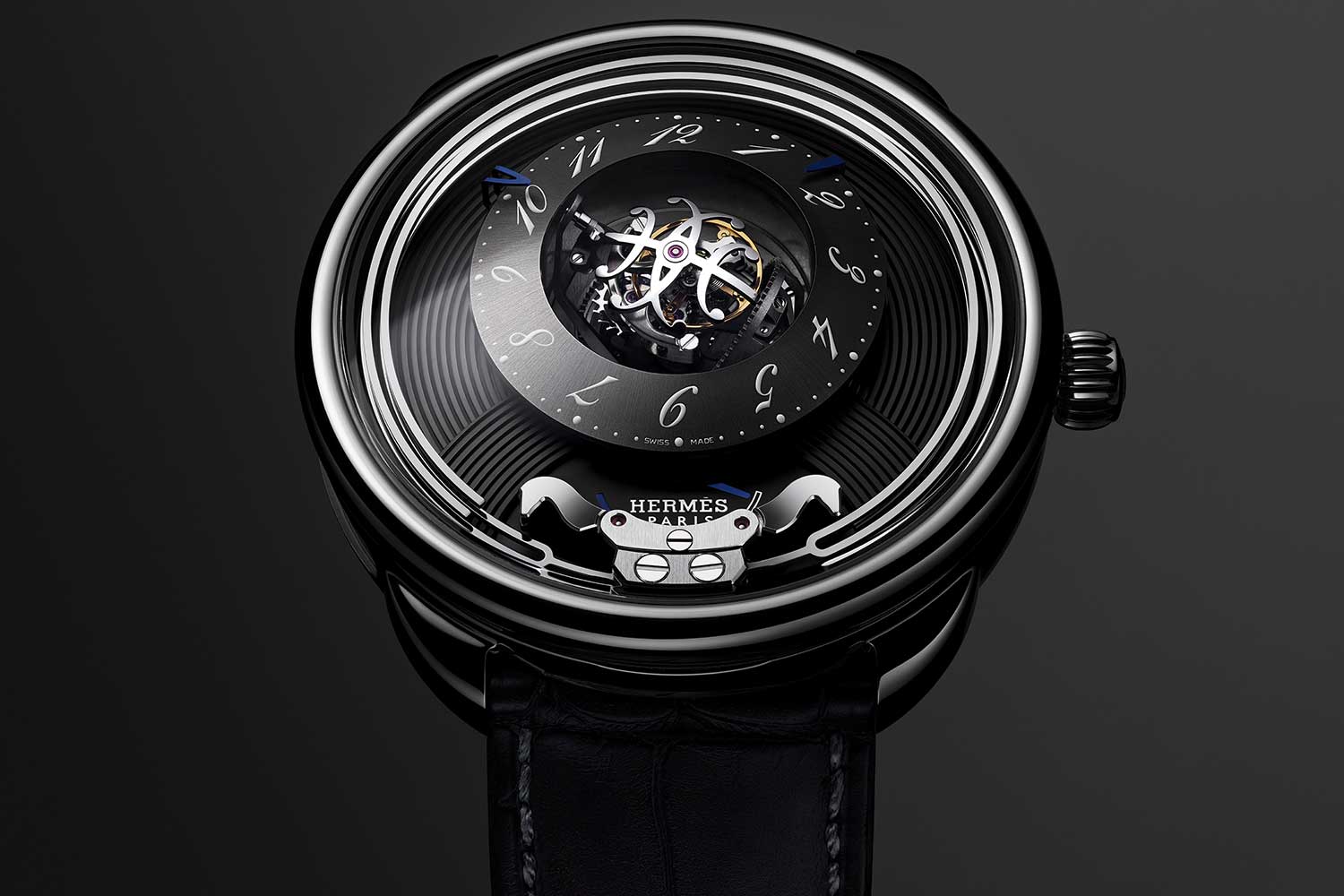
Hermès Arceau Duc Attelé
Most striking is the unusual shape of the hammers and gongs. In a conventional repeater, there are two circular gongs made out of hardened steel wire, tuned to two different notes that encircle the movement once in opposite directions. In this design, the gongs feature a ‘tuning fork’ structure with elongated U-shaped branches. Despite encircling the movement only once, due to its dual branches, the sound it produces is akin to that of a cathedral repeater, where the gongs encircle the movement nearly twice. The minute repeater hammers themselves at five and seven o’clock take the shape of a horse.
Tourbillon minute repeaters are as hard to execute as always but this one represents quite a significant undertaking, with a world first in combining a grand complication with a high beat movement and doing so in a remarkably unexpected and captivating way.
Movement: Hand-wound Calibre H1926; 48-hour power reserve; 5Hz or 36,000 vph
Functions: Hours, minutes, central triple-axis tourbillon and minute repeater
Case: 43mm; Titanium or rose gold
Dial: Striped guilloché pattern; blued indicator hands around a black brushed chapter ring
Strap: Matt anthracite or matt abyss blue alligator strap crafted in the Hermès Horloger workshops
Availability: Limited to 24 pieces in each metal
Price: Upon request












